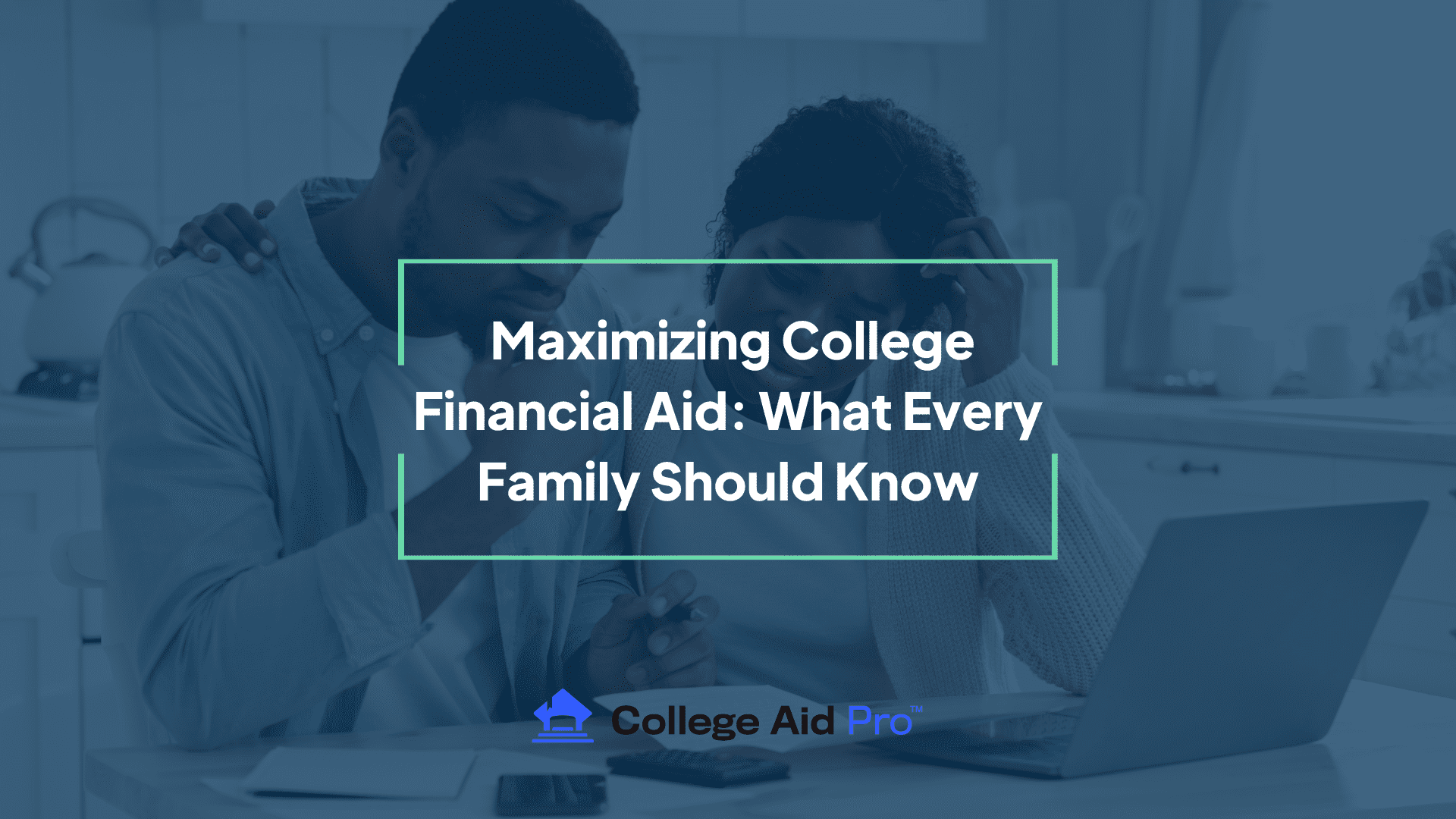Understanding Financial Aid
First thing’s first – don’t feel ashamed if you’re more than a little intimidated by the college financial aid process. You’re in good company.
More good news – we are here to arm you with the key educational concepts necessary to navigate this financial maze. You’ll come out the other side aware of all the options, regardless of your income and other financial circumstances.
One of the most important initial distinctions to be made is the difference between ‘merit-based’ aid and ‘need-based’ financial aid. Merit-based aid is awarded to students based solely on their academic credentials (think GPA, SAT/ACT, resume, artistic or athletic ability), while need-based aid focuses on the larger family’s financial situation.
Student Aid Index
A logical starting point for all families when determining which schools will be most cost-effective is to understand their own need-based aid eligibility. The first step in making this assessment is to determine the family’s Student Aid Index (SAI).
This is a number calculated by the federal government, and colleges, based on the financial information provided on the FAFSA and CSS Profile. This is an eligibility index number that a college’s or career school’s financial aid office uses to determine how much federal student aid you would receive if you attended their school.
Spoiler alert! You will very likely be displeased with this number and it is usually not a good barometer for what a family can actually afford. In any event, the SAI can then be used to calculate whether a family will demonstrate need at a given college.
The universal equation schools use to calculate a family’s financial need is:
Cost of Attendance – Student Aid Index = Need
Example: a school with a $70,000 cost of attendance (COA) minus a $40,000 student aid index (SAI) equals $30,000 of need-based eligibility.
The good news is, you do not have to wait until you submit the FAFSA to understand your SAI. You can create a free MyCAP account, and we’ll calculate that for you instantly.
Understanding Need
The most important component of this equation is a family’s understanding of their SAI. A close second is the demonstrated need and what percentage a given school will typically meet. Although I’m sure your brain tends to focus on that ever-growing COA “sticker price,” keep in mind we’re initially less concerned with that number, and more so with the other pieces of the equation. It’s not to say that COA isn’t a key factor, but it is the third most important piece of this equation when it comes need-based aid eligibility and ultimately what the net price will be.
Frankly, every college or university meets need differently. Some schools meet 100% of a family’s need, while others may only award up to 80%. This is critical to understand, especially if you are a family who demonstrates need, and should inform the strategy in terms of searching for colleges who will give you the biggest discounts. If you are need eligible, ideally you’ll want to search for colleges who meet 100% or as close to it as possible. It is just as important to understand if you are NOT eligible for need-based aid, as this can inform your college search to focus on schools who will provide merit scholarship discounts.
Lowering Your SAI
So if the SAI is the most critical component when it comes to need-based aid, how can you control that number? Or better yet, how can we drive that number down? What can you do as a family to lower your SAI and increase your level of need?
Here are five ways to be proactive in limiting (or better yet lowering) your SAI:
1. Know the definition of an asset.
Schools consider anything in a non-qualified account (aka non-retirement savings) an asset when determining your SAI index number. Checking accounts, savings, stocks, bonds and mutual funds all fall into this asset category.
In contrast, 401Ks, IRAs, Roths and qualified annuities are retirement funds, and therefore not considered assets in this college finance equation. You don’t have to worry about these being “held against you.” That being said, you are not expected to include them on the Free Application for Federal Student Aid (FAFSA) when asked to report assets. Less is more!
2. Understand the two key methodologies used to calculate SAI.
Each assesses total family income and liquid, non-retirement assets. However, they vary in consideration of financial assets:
–Federal Methodology (used by the government/public schools): excludes home equity in a family’s primary residence
–Institutional Methodology (used by most private schools): includes home equity of the primary residence
In other words, a public school like The University of California will not consider the equity in your primary residence when calculating SAI. However, a private school such as New York University treats that same home equity no different than a checking or savings account, thus lowering your family’s need-based financial aid eligibility and increasing the amount you’re expected to contribute.
Doesn’t sound fair does it? We’re not saying it’s always a reasonable process, but it is the process nonetheless. Know that as a homeowner with a substantial amount of equity in your primary residence, you will have varying SAIs, depending on where your student applies.
As discussed, home equity is an assessable asset by private schools who require the CSS Profile application. However, colleges can vary on how much weight they put on that assessment. Some colleges may assess the full amount, whereas some may put a limit or cap on the amount. Also, there are a small number of private colleges (MIT, Harvard, Princeton to name a few) who will not assess home equity at all. Using your MyCAP account, you can search schools and see how they assess home equity as we have and which schools may offer your family a bigger discount.
3. Eliminate the lowest hanging fruit – any assets in your student’s name.
This is the first place schools look, and student assets are valued at a much higher percentage than that of parents. Students also lack what’s called an asset protection allowance, as opposed to parents who can generally have up to $60,000 of non-retirement assets before schools begin to “count” it towards the SAI.
Many families make the rookie mistake of incorrectly reporting traditional 529 college investments as student assets. Although logical to think of this money as a student asset since it’s been saved specifically for that student’s education, it’s actually a parental asset. Don’t beat yourself up if this is news to you. Just be sure to report your hard-earned 529 savings as yours (a parental asset) on financial aid forms to avoid lowering your need-based eligibility.
4. Make the important distinction between parent income and student income.
Similar to assets, schools put greater emphasis on student income. A key difference between assets and income however, is that students have an income protection allowance just over ~$9,400. This means that until a student begins making more than that amount annually, their earnings will not be factored into the SAI equation. This distinction is especially important for self-employed families paying their student a salary. That’s a great tax strategy, but if you want to qualify for need-based financial aid, it could prove detrimental is the salary is above the income allowance.
In short, regardless of your family’s finances, how you present yourself to colleges matters! It’s important to recognize that you’re not merely at the mercy of these educational institutions. Valuable resources exist to help you approach this complex process in the most efficient and effective way possible. We encourage you to create a MyCAP free account today.
Although we recommend starting with need-based financial aid eligibility, it’s important to understand that many families, regardless of how finances are presented, simply won’t qualify for need-based aid. Once that’s determined, the focus can shift to merit-based aid!



